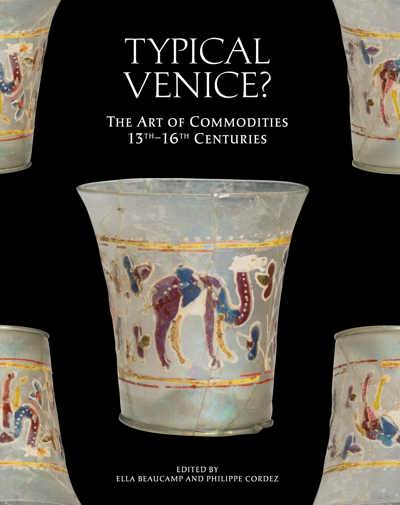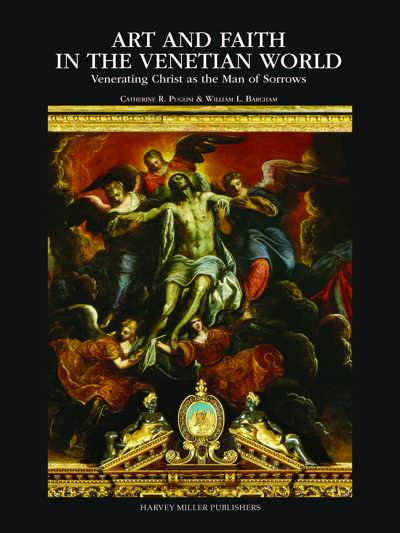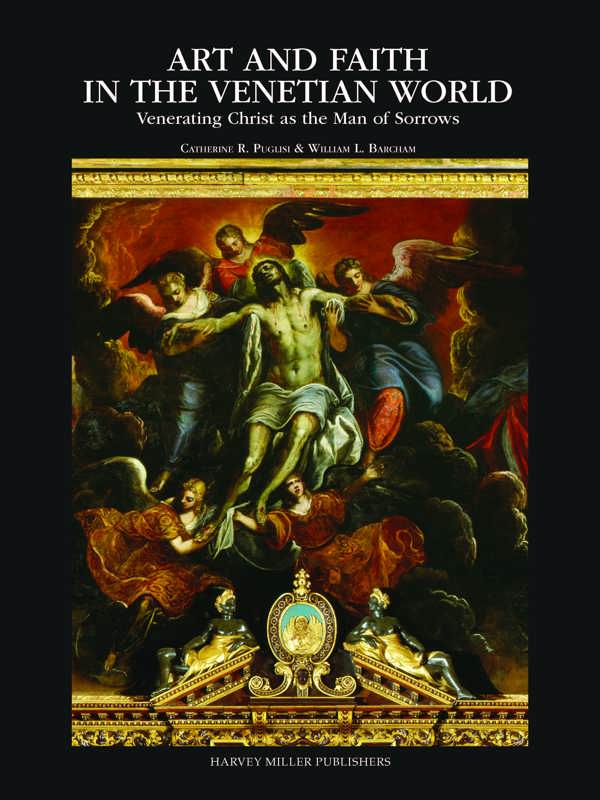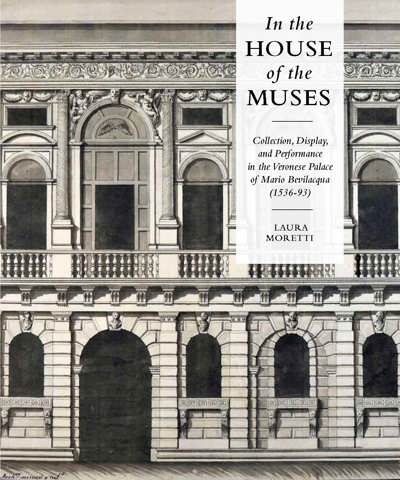
Art and Faith in the Venetian World
Venerating Christ as the Man of Sorrows
Catherine R. Puglisi, William Barcham
- Pages: 425 p.
- Size:225 x 300 mm
- Illustrations:10 b/w, 252 col., 1 maps b/w
- Language(s):English
- Publication Year:2019
- € 175,00 EXCL. VAT RETAIL PRICE
- ISBN: 978-1-912554-29-4
- Hardback
- Available
A study of Christ as Man of Sorrows in the Venetian world from the late Medieval through the Baroque era.
"Art and Faith is an outstanding analysis of the connections between religion and artistic culture in Venice during this period and, above all, of the metamorphoses that a universal Christian theme could undergo depending on the spirituality, devotional requirements and intentions of the patron. So many fresh insights are to be found in its densely-argued pages, well supported by excellent images. (...) Its capacity to open up new horizons and to stimulate further reflections are among the many merits of this book, which will henceforth be regarded as a fundamental contribution to the study of the history of art in Venice." (Linda Borean in: The Burlington Magazine, vol. 163, June 2021)
“Questo impegnativo volume, di formato importante e con un ottimo corredo iconografico, parrebbe essere il primo di una collana «All’ombra del leone di San Marco», come indica la sua denominazione. Il libro tratta un tema a cui gli autori hanno dedicato anni di studio, con diversi interventi (…)” (Giovanna Baldissin Molli, in Il Santo, LXI/1-2, 2021, p. 313)
“The luxurious volume under review offers the first extensive study of that iconographic theme from roughly 1290 to 1700, and it demonstrates with plentiful color illustrations the great diversity of images of the suffering Christ in early modern Venetian territories (…) this volume makes new material and lines of inquiry available to students and scholars alike.” (Christopher J. Nygren, in Sehepunkte, 21/7-8, 2021)
"No doubt this book will serve as an essential resource for scholars studying any late medieval or early modern depiction of the dead Christ, not only in Venice and the Veneto, but also further afield." (Paul H. D. Kaplan, in Renaissance Quarterly, 76/2, 2023, p. 1511)
Catherine Puglisi and William Barcham have written extensively on the Man of Sorrows and co-curated an exhibition on the subject in New York in 2011. Each also publishes separately, Puglisi on Caravaggio and Bolognese art, and Barcham on Venetian 18th-century painting.
Art and Faith in Venice is the first study of the Man of Sorrows in the art and culture of Venice and her dominions across three centuries. A subject imbued with deep spiritual and metaphorical significance, the image pervaded late-Medieval Europe but assumed in the Venetian world an unusually rich and long life. The book presents a biography, first tracing the transmission of the image as a vertical, half-length figure devoid of narrative from the Byzantine East c. 1275 and then exploring its gradual adaptation and diffusion across the Venetian state to a wide range of media, reaching from small manuscript illuminations to panel paintings, altarpieces, tombs and liturgical furnishings. Analyzing its nomenclature, visual form and layered meanings, the study demonstrates how this universal image played a prominent role responding to public and private devotions in the spiritual and cultural life of Venice and its larger political sphere of influence.
The Transmission, Diffusion and Burgeoning of the Man of Sorrows in the Venetian World, ca. 1290–ca. 1425
Transmission and diffusion
Francis, his friars and early images
Early images in Bolzano and from Byzantium
Religious fervor and pious devotions
Emergence on early altarpieces
Early Trecento monumental tombs in the Veneto
San Marco, the Ducal Chapel
A subject of penance and atonement
New cults and devotions; new sites and formats
Triptychs, reliquaries, and altarpiece predellas in the late Trecento
Liturgical furnishings; tombs and altarpieces, ca. 1375–1425
The Cristo passo in the Early Renaissance. Innovation and Originality vs. Continuity and Archaism
Geographic hybridization: the standing Man of Sorrows, and two panels by Michele Giambono
Padua: Pietro Lamberti and Filippo Lippi, two Florentine artists at the Santo
Sacrament tabernacles in Vicenza and the hinterland
Antonio Vivarini
Donatello and Padua at mid-century
Liturgical furnishings, ca. 1440–ca. 1500
Jacopo and Giovanni Bellini, ca. 1445–ca. 1465
Giovanni Bellini, ca. 1465–ca. 1475
Bellini, his followers and workshop; Antonello da Messina
Altarpieces by Alvise and Bartolomeo Vivarini, and Carlo Crivelli
Veneto-Cretan icons
Piety and devotions; the printing press; the Monte di Pietà
The Cristo passo in Verona
Cima, Basaiti and Palmezzano; Mantegna and Bellini in old age
Tradition and Transformations of the Cristo passo in a Century of Crisis and Renewal
The decoration of the Sala del Pregadi
The image in the early sixteenth century: the Bregno workshop
Experiments early in the century: Belliniano, Romanino, Lotto, Titian, and il Moderno
Persistence of late Quattrocento types
Developments in the 1530s: Silvio, Florigerio, and Romanino
Religious reform in the first half of the century
The Cristo passo and Venetian Holy Sacrament confraternities
Representing the Cristo passo at mid-century
Sebastiano del Piombo
Schiavone, Franco, and Jacopo Bassano
Stretching boundaries: Bordone, Titian, and Lotto
Faith and religious reform in Venice at mid-century
Tridentine and post-Tridentine altarpieces: Silvio, Veronese, Ligozzi, Brusasorci, and Micheli
Calamities and anxiety in late sixteenth-century VeniceVeronese and Campagna in S Giuliano
Veronese’s altarpieces and devotional paintings
Representations of the Angel-Pietá in the 1580s: Scolari and the Bassano Workshop
Tintoretto
Palma il Giovane’s altarpieces and devotional paintings
Epilogue



